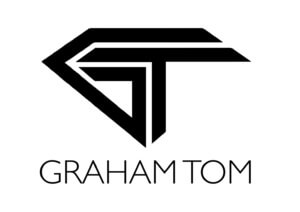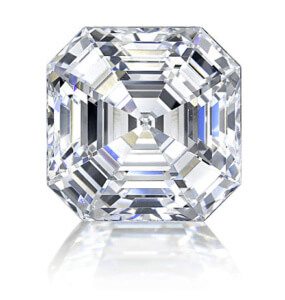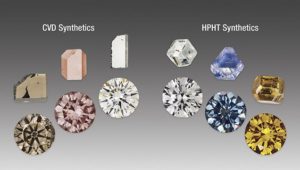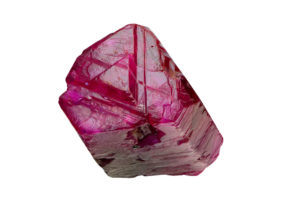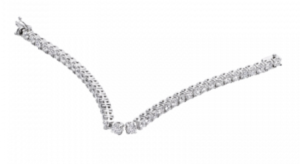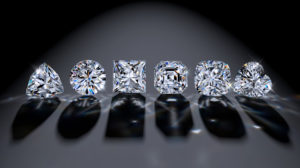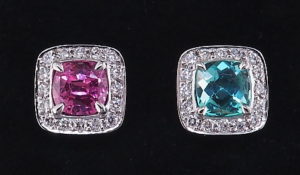Origin
The Asscher cut diamond evolved over a century ago and was first created by the Asscher brothers, diamond cutters in Holland, who were commissioned by King Edward VII to cut the famous rough diamond, the Cullinan for the Crown Jewels.
The Asscher cut, a step cut diamond with its renowned octagonal geometric shape with bevelled corners, deep set crown and pavilion was a popular choice of diamond cut within the Art Deco period but peaked in the late 1920’s. The Asscher cut, latterly could only then be found in specialist Art Deco jewellery boutiques.
A century later in 2002, the Asscher cut was revived and is now termed the modern Asscher cut with a redesigned cut, similar to the Square Emerald cut with revised proportions including smaller table, higher crown and additional facets offering more brilliance than the previous cut. The modern Asscher creates a wonderful illusion resembling an infinite hallway of mirrors and has gained much popularity with the bridal market set in various jewellery, including vintage style engagement rings, eternity rings, earstuds and pendants
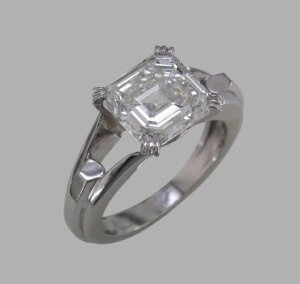
Art Deco inspired design
Proportions
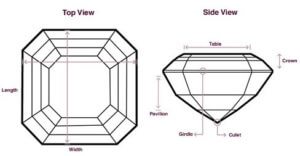
Profile Asscher cut

Ratio parameters
The modern Asscher called Square Emerald cut has 58 facets and the ratio parameter should be square shaped with a ratio tolerance 1.00 to 1.05 (see ratio centre asscher above)
The Royal Asscher Diamond Company currently has marketed the “Royal Asscher” cut, which is a patented square step cut with an extra row of facets on the crown and pavilion with 74 total facets, and incurs a premium cost over Square Emerald cuts.
The Square Emerald cut is a step cut diamond with a tiered crown and pavilion meaning that inclusions to diamond can be visible to naked eye with SI-I2 clarity. It is advisable to consider buying a VS1-VS2 clarity . The cut does not impact on choice of colour of diamond.
GIA grading nomenclature will term a modern Asscher a Square Emerald cut and GIA will not issue Cut grade due to the nuances of proportions. The finish of diamond, the polish and symmetry will be graded from Excellent to Fair.
A table size smaller than overall depth is recommended although there are numerous proportions that would combine for a lively stone. It is essential several diamonds should be viewed before purchase to compare like for like and do ask your jeweller questions re optimal light return as the cut of a diamond is critical in creating reflective, dispersive and scintillation brilliance of a modern Asscher cut.
We have listed below the range of proportions for a modern Asscher Cut diamond and should be used as a guideline only. For further information or if you are considering buying a modern Asscher cut please contact us
| Asscher Cut | Grade |
| Range as guide only | Excellent/Very Good/Good |
| Depth | 58.0%- 75.0% |
| Table | 58.0%- 72% |
| Ratio | 1.00-1.05:1.00 |
| Girdle | Thin to Very Thick |
| Polish/Symmetry | Good to Excellent |
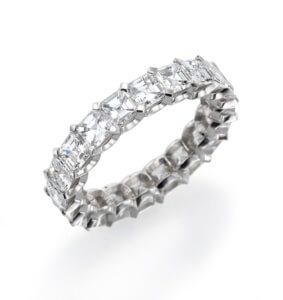
Asscher eternity ring
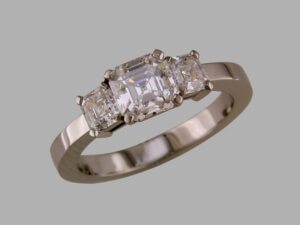
Bridal asscher ring
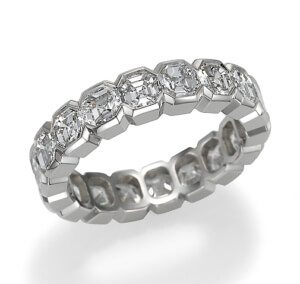
Asscher eternity ring
